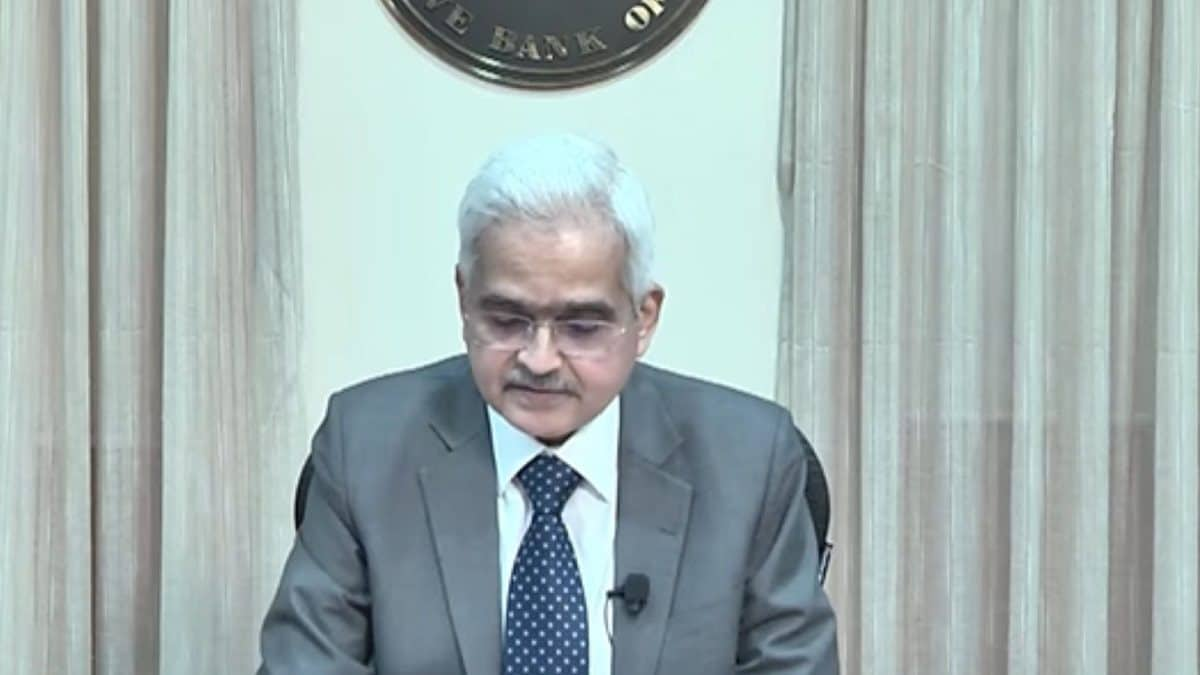‘Indian Economy Resilient, Premature To Talk About Recession in US Now’: Shaktikanta Das Says RBI Monitoring Global Data

[ad_1]
RBI Governor Shaktikanta Das on Thursday said the domestic economic activity continues to be resilient with steady progress in southwest monsoon and higher kharif sowing. On the global front, he said the near-term outlook looks positive but there are challenges on a medium-term horizon. He also said it is premature to conclude a recession in the US based on just one month of unemployment data.
On fears of a US economic recession, Das told reporters in a post-monetary policy press conference, “I would like to say two things. Number one, unemployment data which came from the US last week led to that kind of speculations. But, if you look at the overall economic growth in the US, I think it is doing quite well. The second quarter numbers in the US were higher than the first quarter and it was about 2.8 per cent.”
Secondly, so far as the US employment rate is concerned, it is just a one-month data. “Based on a one-month data, you cannot rush to a conclusion about the possibility of a slowdown or a recession in the largest economy in the world. You have to wait and see incoming data. Several members of the US Fed also say the same thing that we need to wait.”
On Monday, global markets declined sharply as much as 14 per cent after the US unemployment data showed that US labour market cooled more than expected in July, triggering recession fears.
Employers added 1,14,000 jobs, below expectations for an increase of 175,000. The unemployment rate rose to 4.3 per cent, above economists expectations that it would be unchanged on the month at 4.1 per cent.
“The RBI will be watchful of all incoming data, domestic as well as from external sources, and we will deal with all emerging situations,” he said.
Das said international agencies like IMF, OECD and WTO recently projected the world trade to grow about 3 per cent as compared to a very slow growth last year, which will support the overall demand situation.
Shaktikanta Das added that India has improved its resilience vis-a-vis external shocks quite a bit.
In the monetary policy statement, the RBI governor said domestic economic activity continues to be resilient. On the supply side, steady progress in south-west monsoon, higher cumulative kharif sowing,8 and improving reservoir levels augur well for the kharif output. The likelihood of La Niña conditions developing during the second half of the monsoon season is likely to have a bearing on agricultural production in 2024-25.
He also said, “Manufacturing activity continues to gain ground on the back of improving domestic demand. The index of industrial production (IIP) growth accelerated in May 2024. Purchasing managers’ index (PMI) for manufacturing at 58.1 in July remained elevated. Services sector maintained buoyancy as evidenced by the available high frequency indicators. PMI services stood strong at 60.3 in July 2024, and is above 60 for seven consecutive months, indicating robust expansion.”
On the demand side, household consumption is supported by a turnaround in rural demand and steady discretionary spending in urban areas. Fixed investment activity remained buoyant, amid government’s continued thrust on capex and other policy support, he added.
He projected India’s GDP growth for FY25 at 7.2 per cent, with 7.1 per cent in Q1, 7.2 per cent in Q2, 7.3 per cent in Q3 and 7.2 per cent in Q4. Importantly, the projections are the same as were earlier.
On inflation, Shaktikanta Das said headline CPI inflation edged up to 5.1 per cent in June 2024 due to higherthan-expected food inflation. Fuel remained in deflation for the tenth consecutive month. Core inflation moderated to a historic low in May and June.
“Food inflation, with a weight of around 46 per cent in the CPI basket, contributed to more than 75 per cent of headline inflation in May and June,” he said, adding that vegetable prices increased sharply and contributed about 35 per cent to inflation in June.
High inflation pressures persisted across other major food items also.26 On the other hand, the softening in core inflation continues to be broad-based, with core services inflation touching a new low in the current CPI series during May-June 2024.
“The high food price momentum is likely to have continued in July. Large favourable base effects may, however, push headline inflation downwards in July. The impact of the revision in milk prices30 and mobile tariffs needs to be watched,” the RBI governor stated in the policy statement.
Global Economic Outlook
The RBI governor shared a mixed outlook on the global economy, saying that the short-term outlook looks positive while challenges are there in the medium term.
He also said, “Global economic outlook exhibits steady though uneven expansion. Manufacturing is indicating slowdown, while services activity is holding up. Notwithstanding sticky services prices, inflation is receding grudgingly across major economies. With varying outlook for growth and inflation across countries, monetary policy is showing signs of divergence across jurisdictions. Several central banks are cautiously moving towards policy pivots through forward guidance and rate cuts; at the same time, there has been tightening by a few central banks. Global financial markets are exhibiting volatility. Bond yields and the dollar index have softened since the last meeting.”
While the near-term outlook looks positive, there are significant challenges to medium-term global growth outlook. Demographic shifts, climate change, geopolitical tensions and fragmentations, rising public debt and new technologies, such as artificial intelligence, pose new sets of challenges. A coherent policy approach in which monetary policy is complemented by other policies to manage the policy trade-offs will be crucial to deal with such multiple challenges, he said.
[ad_2]
Source link




